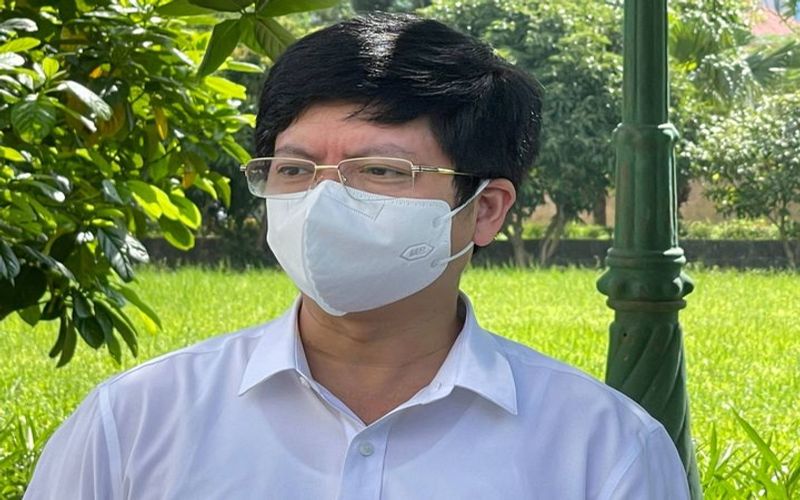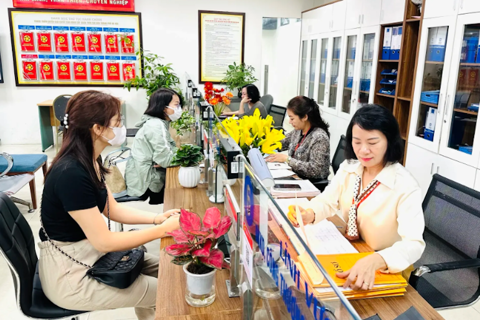Vietnam devises plan to ensure adequate oxygen supply for Covid-19 patients
Vietnam's health sector has surveyed and evaluated the capacity of oxygen production nationwide, which showed that the ability to supply oxygen from domestic production units was 30 times higher than the current demand in hospitals.
Vietnam’s Ministry of Health has asked all localities nationwide to proactively make plans to enhance the supply of medical oxygen for patients of Covid-19 and other diseases.
According to Deputy Minister of Health Tran Van Thuan, greater investment in the medical oxygen supply system must be determined as a long-term measure that can contribute to the ongoing Covid-19 battle whilst offering sustainable use after the pandemic.
A doctor treats a serious Covid-19 patient at Go Vap Hospital in Ho Chi Minh City. Photo: Khoi Nguyen |
“This should be done whilst expanding the production scale and the network of supplying medical oxygen at medical health stations to save the lives of Covid-19 patients, and creating a solid foundation for sustainable use in the future,” Thuan emphasized.
He pointed out four groups of solutions that provinces and cities can use to assess the status of medical oxygen technical infrastructure in health stations at all levels. This can also contribute to devising a plan to improve the technical infrastructure of oxygen systems at medical facilities.
The four groups of solutions including:
Firstly, it is necessary to review and evaluate the current status of medical oxygen technical infrastructure at medical facilities at all levels, which is based on the guidance of the Ministry of Health on medical oxygen demand, to improve the technical infrastructure of medical oxygen systems at facilities treating Covid-19 patients.
Secondly, localities must assess oxygen production capacity and their oxygen supplier network to devise a plan to expand the scale of oxygen production and supply sources to ensure that demands can be fully met.
Thirdly, provinces and cities should implement effective connection and coordination among stakeholders: producers, suppliers, transporters, and users of oxygen to ensure that emergency needs are met without interruption.
Lastly, localities need to strengthen information technology application in managing, coordinating medical oxygen, and properly controlling the price of medical oxygen in the localities to ensure that the price is not a barrier when the demand for oxygen increases.
To increase the production, supply, and ensure medical oxygen for treating Covid-19 patients, Minister of Health Nguyen Thanh Long on September 7 issued a decision on strengthening the capacity to supply medical oxygen for all the facilities of coronavirus treatment.
In an interview with The Hanoi Times, Nguyen Trong Khoa, deputy director of the Department of Medical Examination and Treatment under the Ministry of Health, said the health sector has surveyed and evaluated the capacity of oxygen production nationwide, which showed that the ability to supply oxygen from domestic production units was 30 times higher than the current demand in hospitals.
Deputy Director of the Department of Medical Examination and Treatment Nguyen Trong Khoa affirms that the Ministry of Health is committed to ensuring a sufficient supply of oxygen for Covid-19 patients. Photo: Trong Khoa |
“Medical oxygen technical infrastructure in medical facilities has basically met routine medical care, but there are still some limitations when the number of Covid-19 patients increases,” said the deputy director.
He cited the statistics on Covid-19 waves in Vietnam, the percentage of Covid-19 patients who have the need for oxygen ranging from mild levels such as oxygen masks, oxygen therapy glasses, and high flow oxygen to severe levels such as non-invasive and invasive ventilation, extracorporeal membrane oxygenation (ECMO), accounting for about 9.5% of the total cases.
"Our project aims to guide localities to proactively make plans and organize a close connection between supply and demand in order to exploit resources for producing medical oxygen in the country; prepare medical oxygen infrastructure to treat Covid-19 patients if the worst-case scenario occurs," Khoa told The Hanoi Times.













